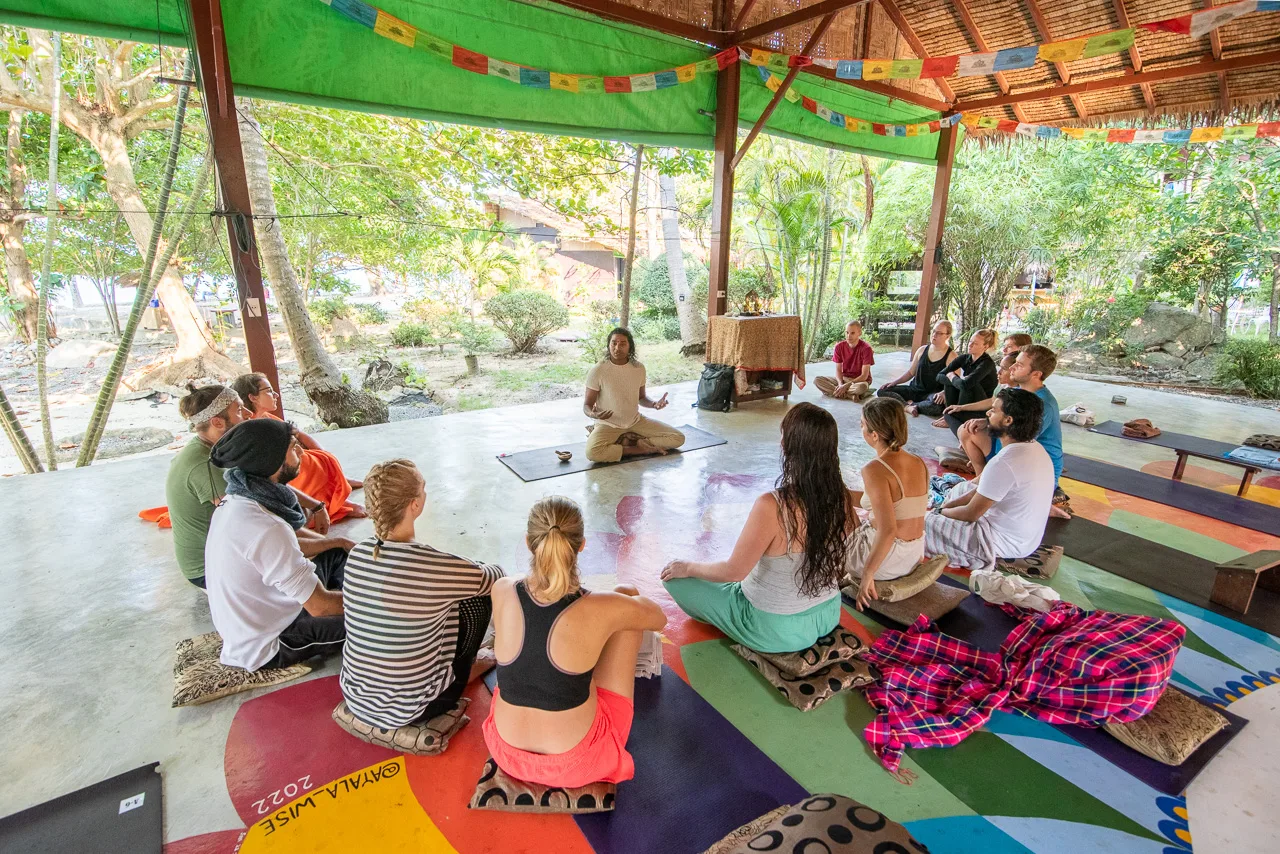Yoga is far more than just the physical practice of postures and asanas—it’s a deeply spiritual system designed to harmonize body, mind, and soul. Rooted in ancient wisdom, yoga philosophy offers profound teachings that are just as relevant today as they were thousands of years ago. In this blog, I’ll introduce you to the core tenets of yoga philosophy, helping you incorporate its timeless wisdom into your modern life.
1. The Eight Limbs of Yoga (Ashtanga Yoga)
At the heart of yoga philosophy is Ashtanga Yoga, or the eightfold path outlined by the sage Patanjali in the Yoga Sutras. These eight limbs offer a comprehensive guide to living a balanced and meaningful life, helping us progress not just on the mat but in every aspect of our existence.
- Yama (Moral Disciplines): These are ethical guidelines for how we interact with the world. They include non-violence (ahimsa), truthfulness (satya), non-stealing (asteya), celibacy or moderation (brahmacharya), and non-attachment (aparigraha).
- Niyama (Self-Discipline): These are internal practices for self-purification and growth, such as cleanliness (saucha), contentment (santosha), discipline (tapas), self-study (svadhyaya), and surrender to a higher power (Ishvara pranidhana).
- Asana (Postures): Physical postures are meant to prepare the body for meditation and increase physical strength, flexibility, and focus.
- Pranayama (Breath Control): This practice involves controlling the breath to calm the mind and energize the body, linking us to our life force (prana).
- Pratyahara (Withdrawal of the Senses): Here, we learn to draw our senses inward, detaching from external distractions and cultivating inner awareness.
- Dharana (Concentration): The practice of single-pointed focus, usually on a specific object or mantra, which helps develop mental discipline.
- Dhyana (Meditation): Continuous focus leading to a state of deep meditation, where awareness becomes uninterrupted.
- Samadhi (Enlightenment): The ultimate goal of yoga, where the individual self merges with universal consciousness, bringing a state of bliss and oneness.
How to apply it:
You don’t need to master all eight limbs at once. Start by integrating small steps, like practicing truthfulness (satya) in daily interactions, exploring breathwork (pranayama), or deepening your meditation practice (dhyana).
2. Karma Yoga: The Path of Selfless Action
Karma Yoga teaches us to perform actions without attachment to the outcome. In a world that’s fixated on results and achievements, this can feel counterintuitive—but it’s a key element of yoga philosophy. By focusing on the process, rather than obsessing over the reward, you free yourself from anxiety and cultivate a more peaceful, purposeful life.
How to apply it:
Whether it’s at work, in relationships, or even on your yoga mat, focus on the joy of doing, rather than worrying about the outcome. Let go of the need for recognition or praise, and enjoy the journey.
3. Bhakti Yoga: The Yoga of Devotion
Bhakti Yoga is the path of love and devotion, often directed towards a higher power, but it can also be towards life itself or the people around us. It teaches us the importance of surrender and faith, cultivating compassion, and recognizing the divine in all beings.
How to apply it:
Incorporate acts of kindness and compassion into your daily routine. Spend time in nature, appreciate its beauty, or connect with a cause that moves you. Even a simple prayer, mantra, or gesture of gratitude can bring Bhakti into your life.
4. Jnana Yoga: The Path of Knowledge
Jnana Yoga is the pursuit of wisdom and self-realization through study and contemplation. It emphasizes intellectual inquiry and reflection to understand the nature of reality and the self. This is the path of the mind, questioning who we are and what life means.
How to apply it:
Take time to study spiritual texts, whether it’s the Bhagavad Gita, Yoga Sutras, or any teachings that resonate with you. Reflect on the nature of your true self (Atman) beyond your ego, and explore the deeper questions of life through journaling or meditation.
5. The Concept of Ahimsa: Non-Violence in Thought and Action
Ahimsa, or non-violence, is one of the most fundamental teachings in yoga. It’s not just about refraining from physical violence, but also about cultivating non-harmful thoughts, words, and actions. In a fast-paced, competitive world, practicing ahimsa can help us approach life with more kindness and understanding.
How to apply it:
Start by becoming more mindful of your thoughts. Do you judge yourself or others harshly? Practice self-compassion and extend that same kindness to others. In your diet, consider reducing harm by adopting more plant-based options. Through these small steps, you can bring ahimsa into every aspect of your life.
6. The Law of Detachment: Letting Go to Find Peace
Yoga philosophy encourages us to detach from material possessions and the outcomes of our actions. This doesn’t mean we stop caring, but rather that we let go of unhealthy attachments that lead to suffering. Detachment brings a sense of freedom and inner peace.
How to apply it:
Practice non-attachment by being present in the moment and letting go of rigid expectations. Whether it’s releasing the need to control a situation or decluttering your space, these acts of letting go can reduce stress and bring more peace into your life.
Final Thoughts: Bringing Yoga Philosophy Into Modern Life
Yoga philosophy offers timeless wisdom that’s surprisingly relevant to the challenges we face today. Whether you’re striving for balance, peace, or personal growth, these ancient teachings provide a practical roadmap. Remember, yoga is more than what happens on the mat—it’s a way of life. By integrating these principles into your daily routine, you’ll discover a more centered, purposeful, and fulfilling existence.
If you have any questions about how to bring these teachings into your life, feel free to reach out in the comments or connect with me on Instagram (@nomadaravind). Let’s continue exploring this journey together!





